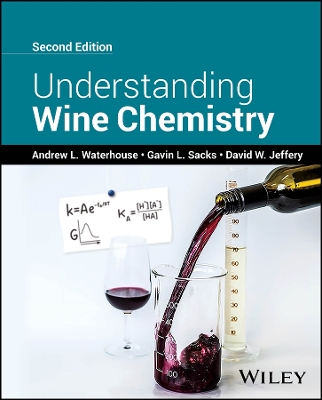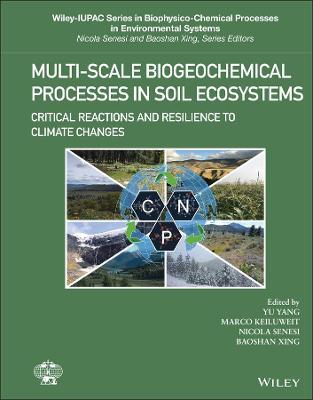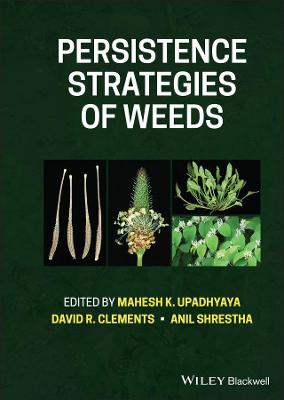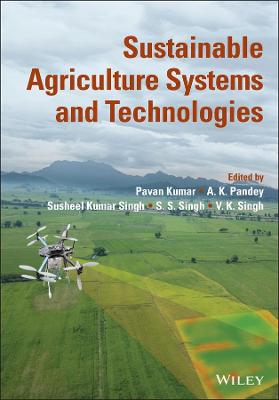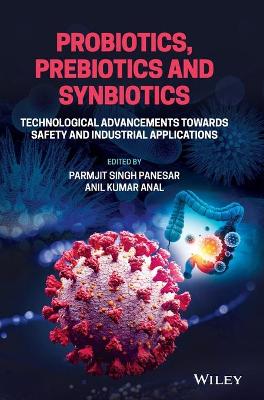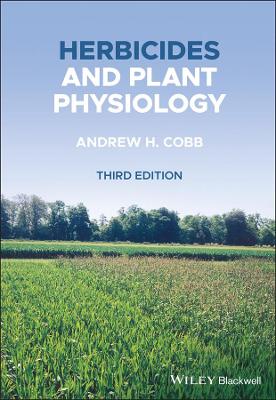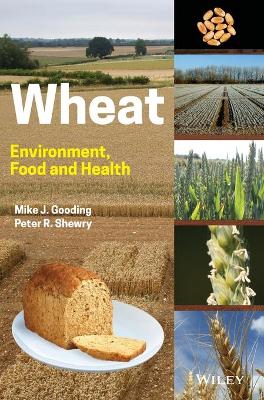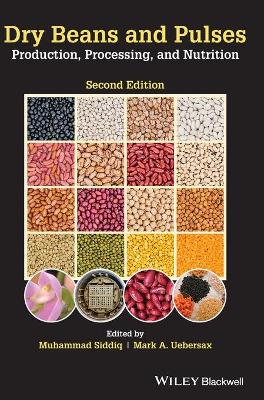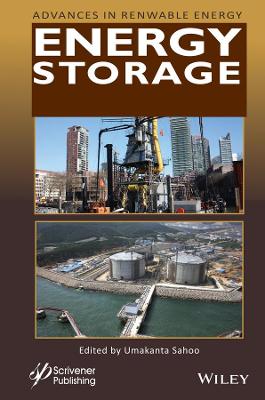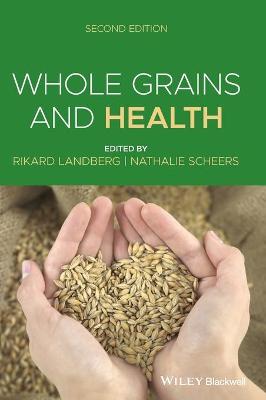Plant Breeding Reviews, Volume 45
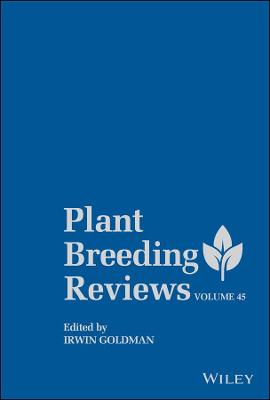 -15%
portes grátis
-15%
portes grátis
Plant Breeding Reviews, Volume 45
Goldman, Irwin
John Wiley & Sons Inc
02/2022
464
Dura
Inglês
9781119828181
15 a 20 dias
838
1 Antoine: Slave, Creole Gardener, and Expert Grafter of Pecan Trees 1
Lenny Wells
I. Background 2
II. Work and Recognition of 'Centennial' Pecan 3
III. Significance 5
Literature Cited 8
2 Hazelnut Breeding 9
Shawn A. Mehlenbacher and Thomas J. Molnar
I. Introduction 13
II. Economic Importance, Producing Countries, and Markets 14
III. Taxonomy of the Genus Corylus 15
IV. Genetic Resource Collection, Characterization and Preservation 23
V. Major Limitations, Needs, and Breeding Objectives 35
VI. History of Genetic Improvement 36
VII. Breeding Programs Since 1960 46
VIII. Floral Biology and Breeding Procedures 54
IX. Breeding for Specific Traits 81
X. Clonal Selection 110
XI. Rootstock Improvement 111
XII. Interspecific Hybridization 114
XIII. Molecular Markers, Genome Sequences, Transcriptome Sequences and Genetic Engineering 119
XIV. Conclusions and Prospects 125
Literature Cited 127
3 Rewiring Network Plasticity to Improve Crops 143
Madara Hetti-Arachchilage, Ghana Shyam Challa, andAmy Marshall-Colon
I. Crop Ideotype Design Using Gene Networks 145
II. Leveraging Network Plasticity to Improve Crops 149
III. Multiscale Modeling to Scale Up Gene Network Predictions 167
IV. Concluding Remarks and Future Directions 170
Literature Cited 171
4 Accelerating Crop Domestication in the Era of Gene Editing 185
Angel Del Valle-Echevarria, Nathan Fumia, Michael A. Gore, and Michael Kantar
I. Introduction 187
II. Molecular Biology in Domesticating and Improving Novel Crops 189
III. Bringing in Genes from the Wild into Domesticated Crops 196
IV. Going into the Unknown: Can We Redomesticate in a More Specific Way to Create Better Crops? 199
V. Do Crop Models Offer Opportunities for Assisting in De Novo Domestication of Wild Species? 200
VI. Can We Revive Lost Domesticates and How Would We Breed These? 201
VII. Can Machine Learning Be Used to Detect Domestication Loci? 202
VIII. Conclusion and Future Directions 203
Literature Cited 204
5 Regional and Global Inter-Connectivity Among Common Bean Breeding Programs 213
Matthew W. Blair, Asrat Asfaw, Daniel Ambachew, andPaul Kimani
I. Who Makes Bean Varieties? Breeding at Various Scales 214
II. Institutional Context of Bean Breeding 215
III. Agenda Setting 235
IV. Projects Versus Networks 238
V. New Concept of Genotype x Environment x Institution (G x E x I) 241
VI. Context-Mechanism-Outcome Framework 245
VII. Conclusion and Future Prospects 248
Literature Cited 250
6 The Plant Sciences Symposia Series: A Model for Private Sector Support for Graduate Education 255
Jason T. Rauscher and Tabare Abadie
I. Introduction 256
II. Background and History 257
III. Objectives and Impact 258
IV. Conclusions 270
Literature Cited 271
7 Ideas in Genomic Selection with the Potential to Transform Plant Molecular Breeding: A Review 273
Matthew McGowan, Jiabo Wang, Haixiao Dong, Xiaolei Liu, Yi Jia, Xiangfeng Wang, Hiroyoshi Iwata, Yutao Li,Alexander E. Lipka, and Zhiwu Zhang
I. Introduction 276
II. Blup Alphabet 277
III. Bayesian Alphabet 282
IV. Machine Learning 284
V. GWAS-Assisted Genomic Selection 288
VI. Hybrid Breeding 292
VII. Multiple Traits 295
VIII. Long-Term Selection 298
IX. Assessment of Prediction Accuracy 301
X. GS-Transformed Plant Breeding 304
XI. Future Prospects 306
Funding 307
Literature Cited 307
8 Genetic Revelations of a New Paradigm of Plant Domestication as a Landscape Level Process 321
Robin G. Allaby, Chris J. Stevens, Logan Kistler, and Dorian Q. Fuller
I. Introduction 322
II. A Deep Pleistocene Onset of Selection 323
III. Modes and Limits of Selection in Domestication 326
IV. The Complex Emergence of Domesticates 333
V. Landscape Level Origins: A New Paradigm 335
Literature Cited 336
9 Breeding for Acylsugar-Mediated Control of Insects and Insect-Transmitted Virus in Tomato 345
Martha A. Mutschler
I. Introduction 348
II. Potential for Plant-Based Pest Resistance 350
III. Work Completed Before the Start of the Acylsugar Breeding Program 353
IV. Phase 1: Acylsugar Breeding Program and Supporting Work 355
V. Phase 2: Acylsugar Breeding Program and Supporting Work 367
VI. Phase 3 Acylsugar Breeding Program and Supporting Work 373
VII. Ongoing Work: Breeding Lines to Support Creation of Commercial Tomatoes With Insect/Virus Control 394
VIII. Future Directions 398
Notes 401
Literature Cited 401
Cumulative Contributor Index 411
Cumulative Subject Index 421
1 Antoine: Slave, Creole Gardener, and Expert Grafter of Pecan Trees 1
Lenny Wells
I. Background 2
II. Work and Recognition of 'Centennial' Pecan 3
III. Significance 5
Literature Cited 8
2 Hazelnut Breeding 9
Shawn A. Mehlenbacher and Thomas J. Molnar
I. Introduction 13
II. Economic Importance, Producing Countries, and Markets 14
III. Taxonomy of the Genus Corylus 15
IV. Genetic Resource Collection, Characterization and Preservation 23
V. Major Limitations, Needs, and Breeding Objectives 35
VI. History of Genetic Improvement 36
VII. Breeding Programs Since 1960 46
VIII. Floral Biology and Breeding Procedures 54
IX. Breeding for Specific Traits 81
X. Clonal Selection 110
XI. Rootstock Improvement 111
XII. Interspecific Hybridization 114
XIII. Molecular Markers, Genome Sequences, Transcriptome Sequences and Genetic Engineering 119
XIV. Conclusions and Prospects 125
Literature Cited 127
3 Rewiring Network Plasticity to Improve Crops 143
Madara Hetti-Arachchilage, Ghana Shyam Challa, andAmy Marshall-Colon
I. Crop Ideotype Design Using Gene Networks 145
II. Leveraging Network Plasticity to Improve Crops 149
III. Multiscale Modeling to Scale Up Gene Network Predictions 167
IV. Concluding Remarks and Future Directions 170
Literature Cited 171
4 Accelerating Crop Domestication in the Era of Gene Editing 185
Angel Del Valle-Echevarria, Nathan Fumia, Michael A. Gore, and Michael Kantar
I. Introduction 187
II. Molecular Biology in Domesticating and Improving Novel Crops 189
III. Bringing in Genes from the Wild into Domesticated Crops 196
IV. Going into the Unknown: Can We Redomesticate in a More Specific Way to Create Better Crops? 199
V. Do Crop Models Offer Opportunities for Assisting in De Novo Domestication of Wild Species? 200
VI. Can We Revive Lost Domesticates and How Would We Breed These? 201
VII. Can Machine Learning Be Used to Detect Domestication Loci? 202
VIII. Conclusion and Future Directions 203
Literature Cited 204
5 Regional and Global Inter-Connectivity Among Common Bean Breeding Programs 213
Matthew W. Blair, Asrat Asfaw, Daniel Ambachew, andPaul Kimani
I. Who Makes Bean Varieties? Breeding at Various Scales 214
II. Institutional Context of Bean Breeding 215
III. Agenda Setting 235
IV. Projects Versus Networks 238
V. New Concept of Genotype x Environment x Institution (G x E x I) 241
VI. Context-Mechanism-Outcome Framework 245
VII. Conclusion and Future Prospects 248
Literature Cited 250
6 The Plant Sciences Symposia Series: A Model for Private Sector Support for Graduate Education 255
Jason T. Rauscher and Tabare Abadie
I. Introduction 256
II. Background and History 257
III. Objectives and Impact 258
IV. Conclusions 270
Literature Cited 271
7 Ideas in Genomic Selection with the Potential to Transform Plant Molecular Breeding: A Review 273
Matthew McGowan, Jiabo Wang, Haixiao Dong, Xiaolei Liu, Yi Jia, Xiangfeng Wang, Hiroyoshi Iwata, Yutao Li,Alexander E. Lipka, and Zhiwu Zhang
I. Introduction 276
II. Blup Alphabet 277
III. Bayesian Alphabet 282
IV. Machine Learning 284
V. GWAS-Assisted Genomic Selection 288
VI. Hybrid Breeding 292
VII. Multiple Traits 295
VIII. Long-Term Selection 298
IX. Assessment of Prediction Accuracy 301
X. GS-Transformed Plant Breeding 304
XI. Future Prospects 306
Funding 307
Literature Cited 307
8 Genetic Revelations of a New Paradigm of Plant Domestication as a Landscape Level Process 321
Robin G. Allaby, Chris J. Stevens, Logan Kistler, and Dorian Q. Fuller
I. Introduction 322
II. A Deep Pleistocene Onset of Selection 323
III. Modes and Limits of Selection in Domestication 326
IV. The Complex Emergence of Domesticates 333
V. Landscape Level Origins: A New Paradigm 335
Literature Cited 336
9 Breeding for Acylsugar-Mediated Control of Insects and Insect-Transmitted Virus in Tomato 345
Martha A. Mutschler
I. Introduction 348
II. Potential for Plant-Based Pest Resistance 350
III. Work Completed Before the Start of the Acylsugar Breeding Program 353
IV. Phase 1: Acylsugar Breeding Program and Supporting Work 355
V. Phase 2: Acylsugar Breeding Program and Supporting Work 367
VI. Phase 3 Acylsugar Breeding Program and Supporting Work 373
VII. Ongoing Work: Breeding Lines to Support Creation of Commercial Tomatoes With Insect/Virus Control 394
VIII. Future Directions 398
Notes 401
Literature Cited 401
Cumulative Contributor Index 411
Cumulative Subject Index 421

